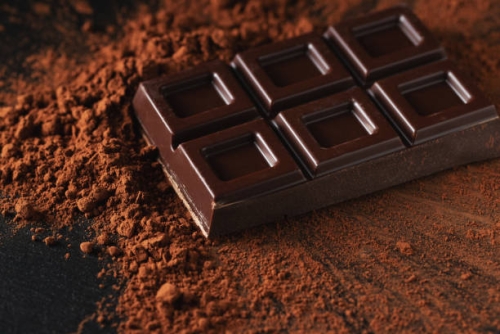Proper care of your breast pump is essential not only for its longevity but also for ensuring that the milk you express remains safe and of high quality. With the right maintenance, your breast pump can be a reliable companion throughout your breastfeeding journey. This article will provide you with comprehensive tips on cleaning, maintaining, and storing your breast pump effectively.
1. Cleaning Your PumpImmediate Cleaning After UseOne of the most crucial steps in caring for your breast pump is cleaning it immediately after use. Here’s a step-by-step guide:
Disassemble the Pump: After pumping, disassemble all the parts that come into contact with milk, including the breast shield, valve, and bottle.
Rinse with Water: Rinse each part with cold water to remove any milk residue. Cold water is preferable because it prevents proteins in the milk from coagulating, making them easier to clean.
Wash with Soap: Use warm, soapy water and a clean sponge or cloth to wash all the parts thoroughly. Avoid using abrasive cleaners or scouring pads that could damage the components.
Rinse Again: After washing, rinse each part thoroughly under running water to remove any soap residue.
SterilizationTo ensure that your breast pump is free from harmful bacteria, sterilization is essential. Here are a few methods you can use:
Boiling Water: Submerge all parts in boiling water for five to ten minutes. Ensure that the parts are completely submerged and do not touch the bottom of the pot to avoid damage.
Steam Sterilizers: Consider using a steam sterilizer, which can effectively kill bacteria without the need for boiling water. Follow the manufacturer's instructions for the best results.
Microwave Sterilization Bags: These bags are convenient for moms on the go. Simply place the pump parts inside, add a little water, and microwave according to the bag's instructions.
Regular Cleaning ScheduleIn addition to immediate cleaning, it’s a good idea to set a regular cleaning schedule for deeper cleans:
Daily: Clean all pump parts after each use.
Weekly: Sterilize pump parts at least once a week.
Monthly: Check the pump for any parts that may need replacement or additional cleaning.
2. MaintenanceRegular InspectionsRegularly inspecting your breast pump helps identify any issues before they become significant problems. Here are some tips:
Check for Wear and Tear: Look for cracks, discoloration, or wear on parts such as the breast shield and valves. Replace any worn-out components immediately to ensure optimal performance.
Maintain the Motor: For electric pumps, ensure the motor is working efficiently. If you notice a decrease in suction power, it may indicate a need for service or replacement parts.
Avoid Submerging the Motor: Never submerge the motor unit in water. Wipe it down with a damp cloth to clean it.
Proper StorageWhen your breast pump is not in use, storing it correctly is vital to prevent damage and contamination. Follow these tips for proper storage:
Cool, Dry Place: Store your breast pump in a cool, dry place away from direct sunlight. Excessive heat or humidity can damage the pump's components.
Use a Dedicated Bag or Container: Consider using a dedicated bag or container to keep your pump and accessories organized. This can help prevent any dust or contaminants from settling on the parts.
Keep Parts Separate: Store the disassembled parts separately to avoid any pressure that could deform or damage them.
3. Storage of MilkStoring expressed breast milk properly is equally important for maintaining its freshness and nutritional value. Here are the best practices for storing breast milk:
Containers for StorageUse BPA-Free Bottles: Ensure that the bottles or storage bags you use are BPA-free. Chicco offers a variety of safe and reliable storage solutions for breast milk.
Labeling: Always label containers with the date and time of expression. This helps you keep track of how long the milk has been stored.
Storage GuidelinesRoom Temperature: Freshly expressed breast milk can be stored at room temperature (up to 25°C or 77°F) for up to four hours.
Refrigeration: In the refrigerator, breast milk can be stored for up to four days. Make sure your refrigerator is set to 4°C (39°F) or lower.
Freezing: For longer storage, breast milk can be frozen for up to six months in a standard freezer or up to twelve months in a deep freezer. Always leave space in the container for the milk to expand as it freezes.
Thawing and Using Frozen MilkWhen it’s time to use frozen breast milk, proper thawing techniques are essential:
Thaw in the Refrigerator: The best method is to thaw frozen milk in the refrigerator overnight.
Warm Water Bath: For quicker thawing, place the sealed container in a bowl of warm water. Never use boiling water or a microwave, as this can destroy nutrients.
Use Within 24 Hours: Once thawed, use the milk within 24 hours and do not refreeze.
ConclusionBy following these breast pump care tips, you can ensure your pump remains in excellent condition, providing you with reliable support throughout your breastfeeding journey. Regular cleaning, maintenance, and proper storage of both the pump and expressed milk are essential for maintaining quality and hygiene.
For quality breast pumps and accessories, visit our website at Chicco, where you’ll find everything you need to support your breastfeeding experience.











